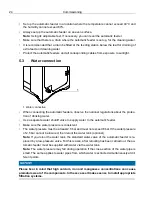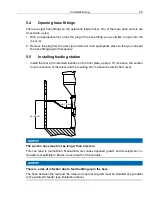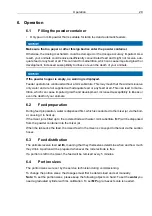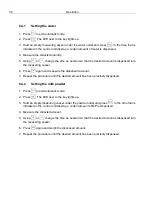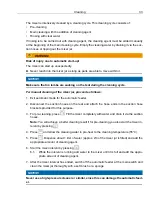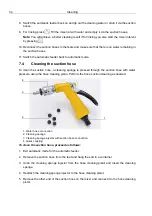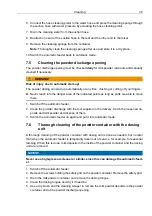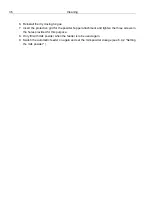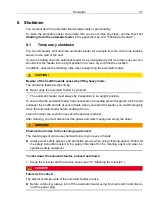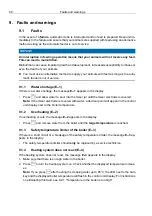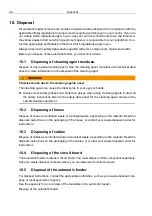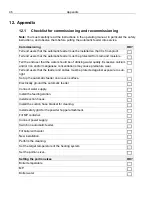
Cleaning
31
7. Cleaning
In order to maintain the required hygienic status, all parts of the automatic feeder or the assem-
blies that are attached to it that could come into contact with liquid or powdered perishable an-
imal feed or additives must be cleaned, such as mixer jar and suction hoses.
Remember:
•
You must follow all safety instructions in the safety data sheet for the cleaning agent you are
using.
•
You must always wear the protective gear, such as protective goggles and gloves, specified
in the safety data sheet for the cleaning agent you are using.
•
Undiluted cleaning agent may not be drained into the ground water or sewage system. Ob-
serve the recommendations in the safety data sheet for your cleaning agent and contact
your water utility company and your sewage disposal company to find out which regulations
apply to you.
•
Observe the cleaning intervals recommended by the manufacturer of the cleaning agent as
well as those recommended in this operating manual (see 11.2 "Maintenance intervals and
activities" ).
•
Only use the cleaning agents recommended in this operating manual.
•
Observe the manufacturer's guidelines regarding the amount, temperature and concentra-
tion of cleaning agent used.
•
Do all of the cleaning recommended in this operating manual.
NOTICE!
Never use cleaning agents containing chlorine, as they can attack the materials of the
automatic feeder and impair its function.
(see 12.2 "Materials list" ) If this happens, your animals might not receive enough feed. This can
lead to malnutrition, which can cause impaired growth and development, increased susceptibil-
ity to illness or even the death of your animals.
NOTICE!
Water (liquids) can damage electrical components.
►
Do not spray-wash the automatic feeder. Do not use any high-pressure cleaners or similar
equipment either. If you want to clean the automatic feeder, only use a damp cloth to wipe
the respective components.








